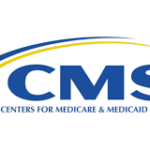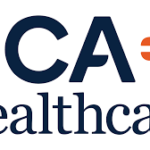.jpg) Sometimes, even the best pre-planning may overlook unanticipated events during the passage of severe weather such as tornadoes and hurricanes. For instance, upon examining Super Storm Sandy’s impact to the New York landscape, both saltwater and freshwater intrusion had an adverse effect on critical utility systems within the Manhattan VA Medical Center. This intrusion, along with its associated aftermath at the facility, presents a perfect opportunity to highlight the necessity and prominence of Continuity of Operations Plan (COOP) planning and detailed critical utility risk assessments.
Sometimes, even the best pre-planning may overlook unanticipated events during the passage of severe weather such as tornadoes and hurricanes. For instance, upon examining Super Storm Sandy’s impact to the New York landscape, both saltwater and freshwater intrusion had an adverse effect on critical utility systems within the Manhattan VA Medical Center. This intrusion, along with its associated aftermath at the facility, presents a perfect opportunity to highlight the necessity and prominence of Continuity of Operations Plan (COOP) planning and detailed critical utility risk assessments.When the Manhattan VA Medical Center’s leadership team examined the adverse risk possibilities to their infrastructure, along with the potential impact to their mission essential functions, they did the right thing in deciding to evacuate prior to the storm. While ensuring that the facility was shut down and properly secured before the storm, they were also planning, and had every intention, to reoccupy and continue patient care and other mission essential functions as soon as the storm was over.
Despite the efforts of crucial staffs who may stay at the facility during the hurricane, serious damage to the critical utility infrastructures may occur which can result in the loss of ability for staffs to perform their essential mission functions for many months. Severe flooding can engulf the lower levels of a facility, thereby damaging such systems as the physical plant, fostering an environment for extensive mold growth, and damaging or destroying medical equipment and supplies.
A well developed and thought-out COOP provides the strategies that should allow for the continuation of the mission’s essential functions such as patient and staff safety and well-being, communications, and supporting the community. The COOP should also detail how the facility Leadership Team will continue, over a protracted time, to make sure that their patients (and future post storm patients) are taken care of, processes implemented so that employees can get back to work, and the rebuilding of the damaged facility. All of these issues will need to be addressed by the Leadership Team while they are in the midst of a situation where communication and coordination are difficult at best.
COOP preparedness can also lessen the hardships and difficulties associated with recovery and resumption of normal operations. This planning should be accomplished by the healthcare facility leadership in conjunction with the facility’s emergency management committee. This planning should not be conducted in a vacuum, however, since the facility is an important asset and resource for the community. As such, the local or county emergency management agency and other stakeholders should be consulted and involved.
The issues of COOP and critical utility systems are not stand-alone areas of focus; they are intertwined. Critical utility systems risk assessment, contingency identification, and evaluation is of paramount importance in addressing COOP preparedness and implementation in the present instead of in the midst of the disaster. In order to conduct the critical utility systems risk assessment, the emergency management committee, facility engineering and other facility stakeholders (environmental services department, respiratory, etc.) need to develop an assessment tool as their guide. This is similar to the facility’s Hazard Vulnerability Analysis (HVA). Where this assessment tool will deviate from the HVA is in its focus on the impact caused by damage, or lost of, one or more of the system’s components. Once the risk assessment is complete, the assessment workgroup will be able to identify crucial areas that may require mitigation efforts. This type of risk assessment is a crucial part of COOP as it directly affects, and may be the predictor, of whether the facility can fully function after a severe weather event.
Remember, sometimes, even the best pre-planning may overlook unanticipated events during the passage of severe weather such as tornadoes and hurricanes. Readiness should not be taken for granted; readiness is a state of risk assessment, careful planning, and plan exercise.

























